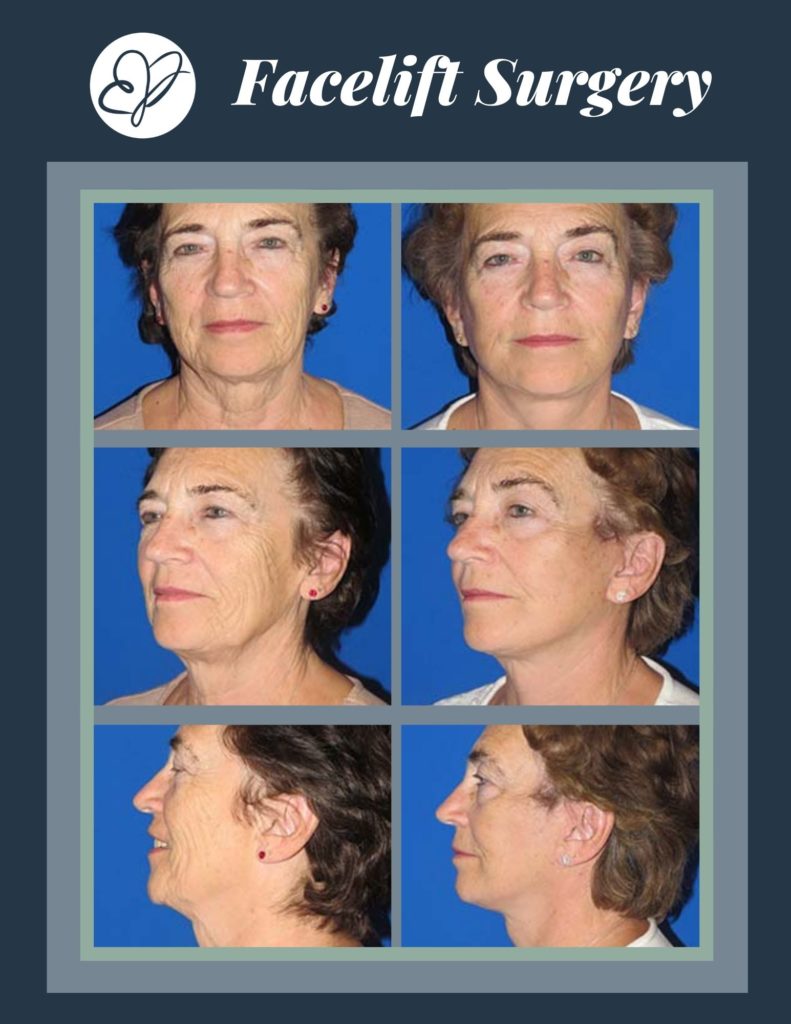If watching any of BRAVO Network’s “Real Housewives” shows is one of your guilty pleasures, you are probably in-the-know about cast member Sonja Morgan’s recent Deep Plane Facelift. She and almost every celebrity news facet have inundated the internet with her before and after images. And the truth is – the pictures ARE impressive. But, the heightened popularity of the procedure has many wondering how it differs from a traditional Facelift and whether or not the procedure is safe. Let’s dive deeper into the details behind the Deep Plane Facelift and why many surgeons still gravitate towards a more traditional route for patient safety and results.

“Celebrity plastic surgery on TV, magazine, and social media is a blessing and a curse to your everyday plastic surgeon,” says Dr. Michael Philbin with a smile.
As a Board-Certified Plastic Surgeon at Edina Plastic Surgery, he has performed hundreds of consults that include patients’ magazine clippings or smartphone pictures of reality tv stars and Hollywood actors after their plastic surgery ‘tell-alls.” “In their best light, celebrity’s surgeries draw attention to some of the wonderful things that our specialty can achieve to enrich people’s lives. But, some of these procedures can also sensationalize irresponsible approaches to surgery, unsafe techniques, and truly misguide the everyday person. It’s important to educate yourself about the procedure you are interested in from credible resources (no E!News) and to discuss your options with a plastic surgeon before deciding what is right for you.”
What is a Traditional, or SMAS Facelift?
Officially named by surgical anatomists in the 1970s, the Superficial Musculo Aponeurotic System, or SMAS is a dense connective tissue layer within our cheeks. It lies between our subcutaneous fat above and the muscles that control our facial expressions below.

“The earliest Facelifts performed were truly single layer procedures,” explains Dr. Philbin. “Because they only tightened the skin, a patient experience good results for only a few years and might have suffered from poor scarring due to high tension on sutures. Surgeons eventually began to tighten the SMAS layer to enhance the lifting capability, which also improved the longevity of results and dramatically improved scarring due to ease of tension. Tightening the skin will always be an integral part of a Facelift, but true “lift” comes from that SMAS effect.”
What is a “Deep Plane” Facelift?
The “Deep Plane” Facelift was developed in the 1990s by Dr. Sam Hamra, a plastic surgeon from Texas. With this technique, the skin and SMAS are raised and tightened as a single layer. Some surgeons believe that this method provides better circulation for the overlying skin. In contrast, others show concern that the technique poses a greater risk for facial nerve injury due to the depth at which it is performed.
How does a SMAS Facelift Differ from a Deep Plane Facelift?
“In simple terms, a SMAS Facelift raises the SMAS and skin layers separately, while the Deep Plane does it together,” explains Dr. Philbin. “One huge advantage of the SMAS, or traditional Facelift, is that it can tighten your skin in different directions. From my perspective, as your surgeon, this affords me better control and freedom to customize your results. The Deep Plan method limits your surgeon to one direction of tightening.”

As Dr. Philbin mentions, the SMAS Facelift is a more versatile technique. Not only does it lift the SMAS as a separate layer, but your surgeon may modify it as well.
For example, if a patient presents very heavy jowling in the low face, a surgeon may actually excise part of the SMAS layer or fold it on itself. They may also choose to move the SMAS layer more inward towards the midline of the face if a patient has significant sagging in the central cheek. Regardless of individual face shape, bone structure, soft tissue volume, or skin quality, the Deep Plane Facelift can only perform the same action for every patient.
Is One Type of Facelift Superior to the Other?
“At Edina Plastic Surgery, we favor the Traditional, or SMAS Facelift for its proven efficacy and safety, and because we believe it delivers superior results,” says Dr. Philbin. “No two faces are the same. The SMAS Facelift allows your surgeon to restore a more youthful and natural-looking appearance to your face because it can be customized. We believe that the Deep Plane Facelift’s deeper nature may pose a greater risk of facial nerve injury. With no clinical studies or evidence pointing to patients getting a more natural or superior result with the Deep Plane technique, we do not think this is a risk worth taking for our patients.”
Are you considering Facelift Surgery? Schedule a complimentary consultation with an Edina Plastic Surgery Plastic Surgeon by calling (612) 688-3177, or get started by CLICKING HERE.


